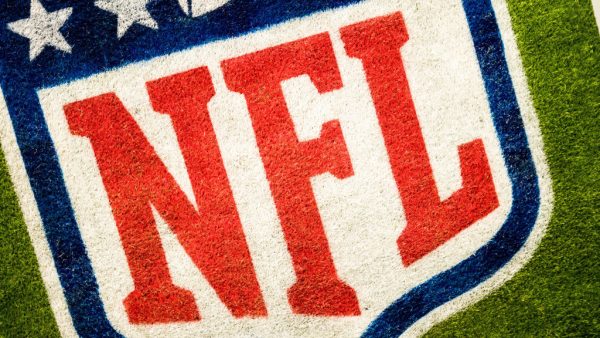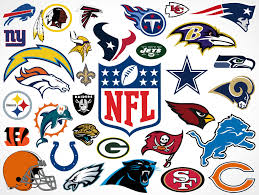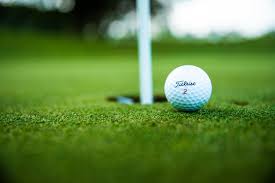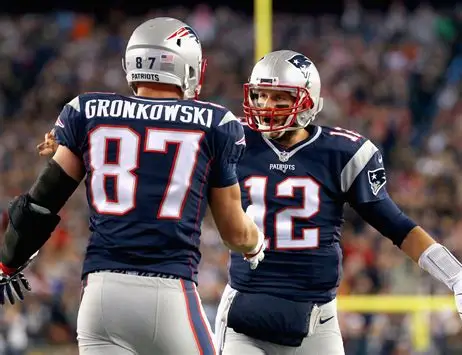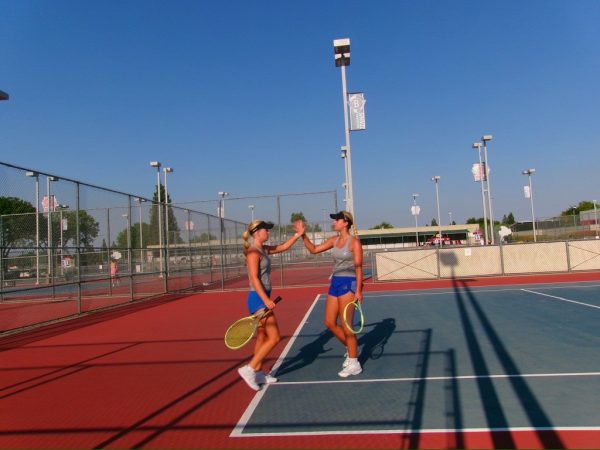Beyond the football field
When the football season ends, the cheerleading season is just starting.
“One, two, three, four, five, six, seven, eight and one, two, three, four…”
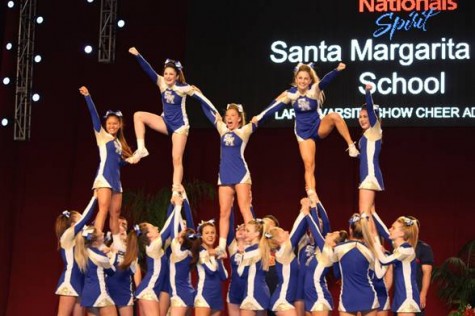
Eagles soaring – The SMCHS Varsity Cheer team hits the final pyramid at the 2014 USA Nationals.
Carrie counts in her head as she approaches the last element of the routine: the pyramid. She feels the bases grip her feet and in a blink she is high above the ground. At the very top of her ascent, she has a split second to take it all in. The cheers, the crowd, the lights, the atmosphere…
Thriving off the energy from her teammates she counts the last “eight” in her head and screams, “EAGLES!” She does not have a single breath left in her. So why does she do it?
Because she loves her sport.
Senior Carrie Marquart has been cheerleading at the competitive level for 12 years and has been a part of the SMCHS Pep Squad for three.
“Cheer requires countless hours of training and practice, but so does playing an instrument,” Marquart said. “What makes cheer a sport rather than an activity is the endurance demanded to compete and the movements involved. It requires extreme strength for lifting, insane flexibility for jumps, body positions and tumbling, and to be in great cardio shape to be able to finish an action-packed routine without passing out.”
Okay. If we are referring to the “rah rah, go team!”, pompoms everywhere type of cheer, then yeah, I agree, cheer is not a sport. However, there is another aspect to cheerleading called “competitive cheerleading” that involves daily three hour practices, gravity-defying stunts, an excessive amount of makeup and blood, sweat and tears. Routines are 2.5 minutes and consist of a series of high-level stunts, jumps and tumbling.
This is the real deal. All participants in competitive cheerleading are considered athletes. (Side note: the definition of an athlete is a person who is trained in exercises that require physical skill and strength. So don’t argue with me on this one.) During competition season, cheerleaders practice their routine at least 10 hours a week.
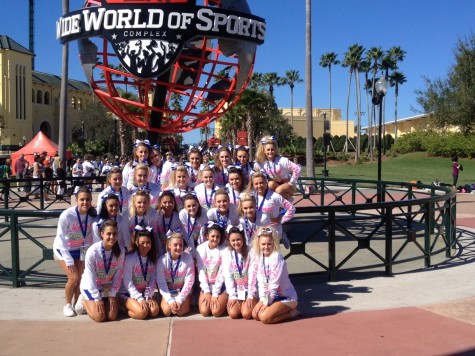
Beginning in 1982, a new activity stemmed off of high school cheer called “all-star cheerleading..” All-star cheer focuses primarily on athletic training and competition performances, as opposed to school-based cheerleading, which still encompasses leadership and spirit qualities. Today, many companies offer both scholastic and all-star categories, while some companies focus solely on all-star cheerleading. The biggest companies such as JAMZ, USA, UCA and GSSA, all offer competitions at the regional and national levels for both scholastic and all-star programs. The competitive season begins in June after tryouts and finishes at the end of April following Worlds (USASF) in Orlando, Fla.
“All-star cheer is way more about the wow-factor, the glitzy hair and flashy uniforms,” Marquart said. “High-school cheer is focused on the precise technique and execution of every single skill as well as synchronized timing, which is extremely difficult to master with 20 members on the mat. The rules and regulations of high-school cheer mimic collegiate cheerleading while all-star makes up their own rules.”
In fact, some really impressive all-star teams are considered celebrities in the cheer world. For example, the California All-Stars are home to three world champion teams: Cali Lady Bullets, Cali Smoed and Cali Coed.
As competition becomes a regular part of the cheerleading experience, camps, properly trained coaches and special training in tumbling and stunts are necessary. Add in the expanding competition circuit and all-star cheerleading is a multi-million dollar industry. Today, there are an estimated 500,000 boys and girls in America who are participants in cheerleading.
However, with the increased amount of difficulty that is required from very young to middle-aged girls, the injury rates have also gone up. Lisa Kluchorosky, sports medicine admistrator and the National Athletic Trainers’ Association liaison to the AAP, agrees that cheer should be considered a sport.
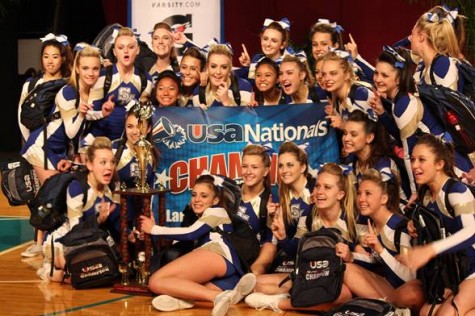
“Cheerleading is still not considered a sport in many states, and it very much should be,” Kluchorosky said. “If it were designated as such, it would be subject to the rules of all other sports, which means participants would be afforded the same resources and health care, and held to the same regulations.”
So to all the haters, I am here to prove you wrong once and for all. And the only way I can effectively do this is to state the cold, hard facts.
In actuality, there isn’t a concrete definition of an “official sport”, but luckily for cheerleaders, the Women’s Sports Foundation has narrowed it down to some specific elements that contribute to the qualifications of a sport.
1. It must be a physical activity which involves propelling a mass through space or overcoming the resistance of mass. Unless you don’t agree that launching a person six feet in the air is “propelling a mass through space” then your argument is invalid.
2. Contesting or competing against/with an opponent is required. I mean how else to you define a cheer competition? It consists of teams going head to head in fierce competition to see who will come out on top and be named the “National Champions”.
3. It must be governed by rules that explicitly define the time, space and purpose of the contest and the conditions under which a winner is declared. All cheer routines have a time limit, a mat that is a specific size with specific requirements and score sheets that judges use in order to determine the winner of the competition.
Well, the facts are all right there and if you STILL do not agree that cheerleading is a sport, then go ahead: tell us it’s not a sport. We will just tell you to sit back, relax and watch us prove you wrong.


